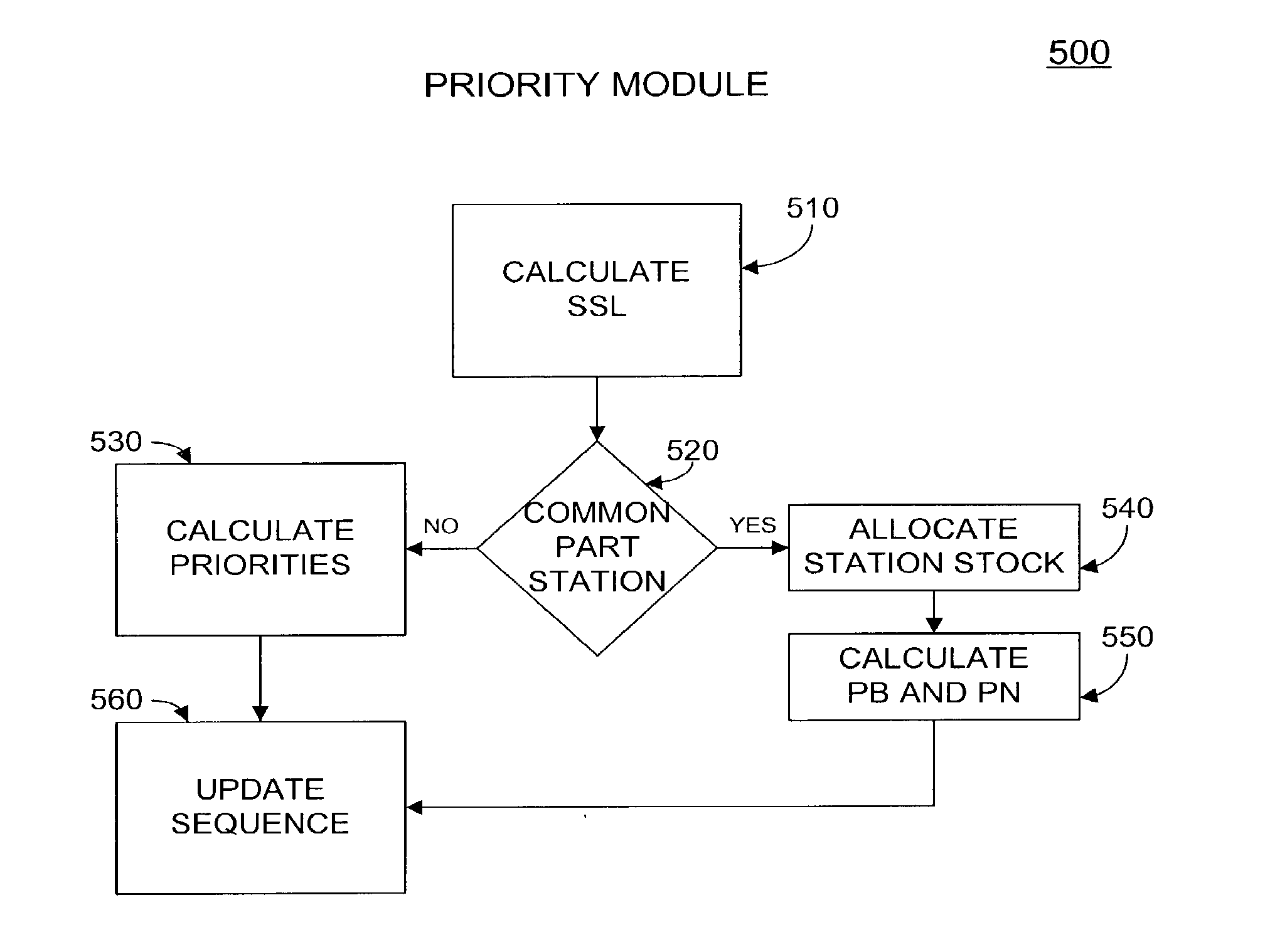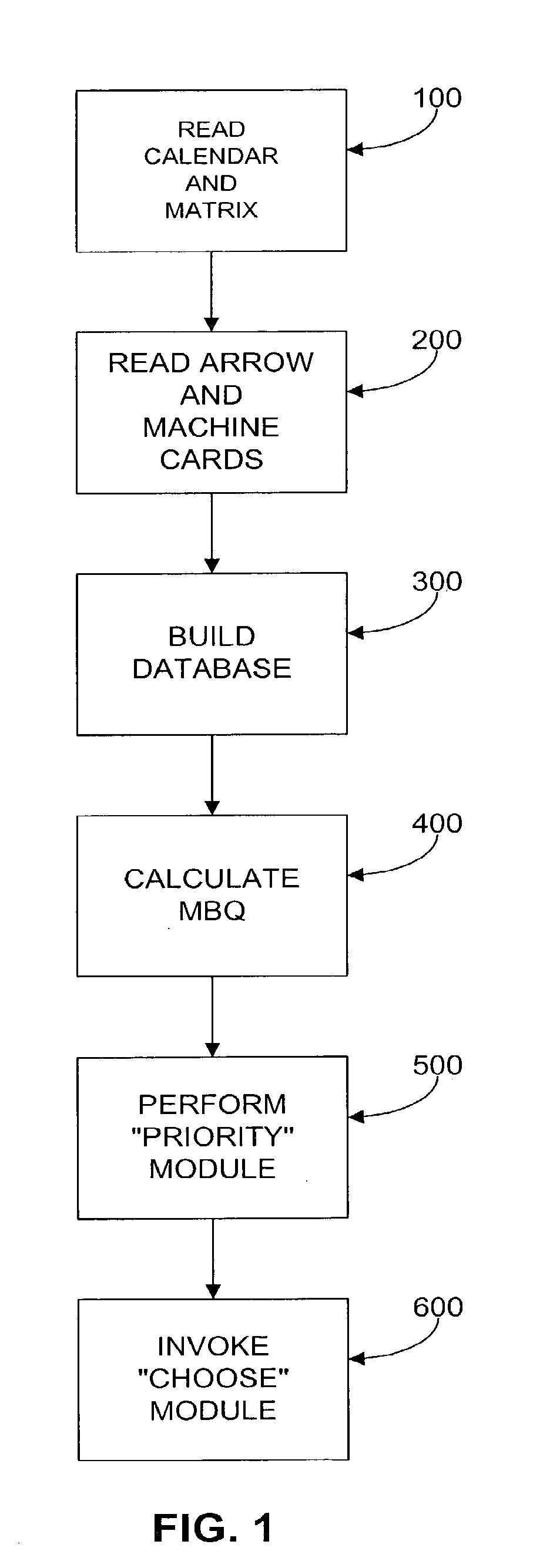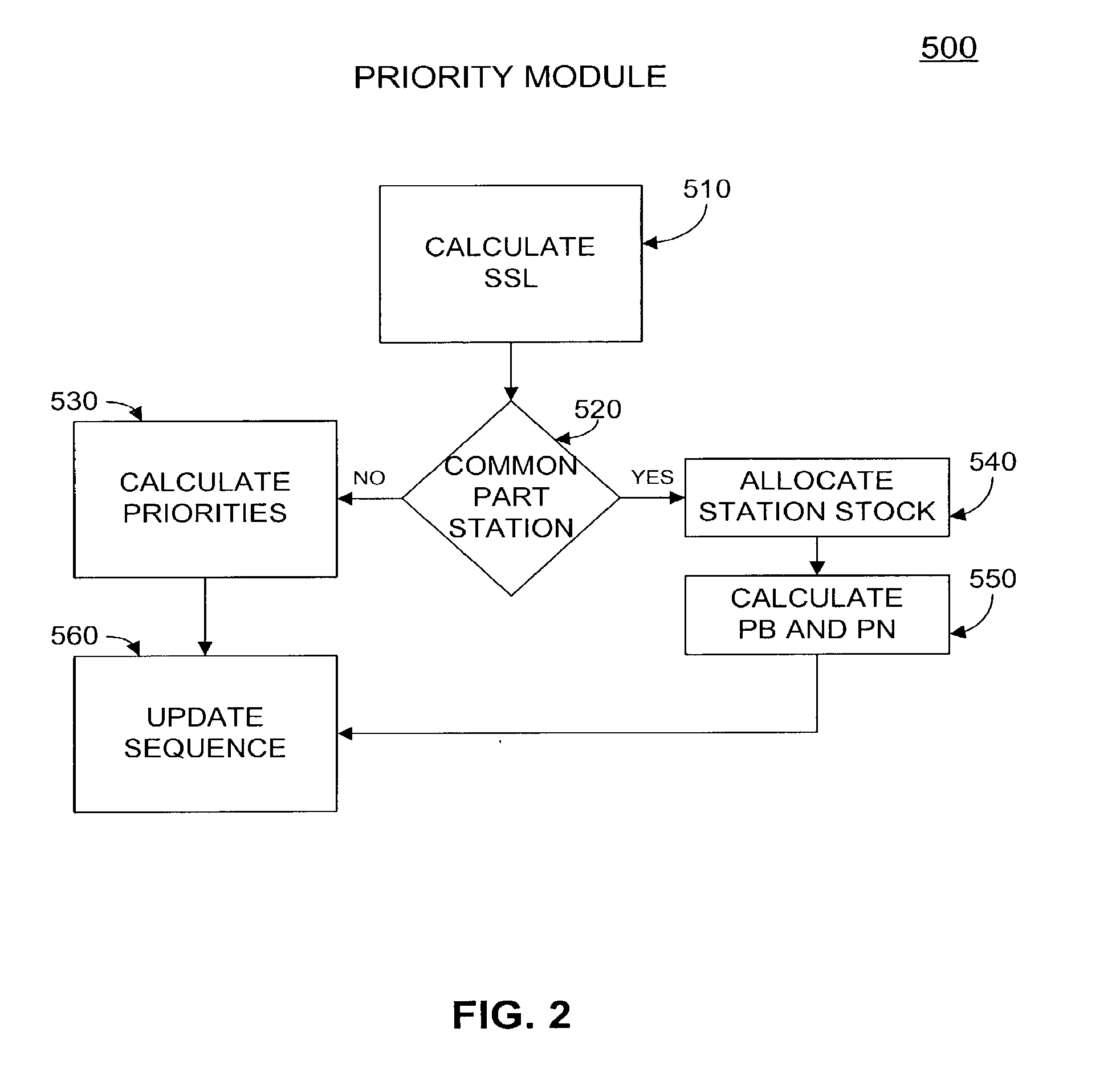Constraint-based production planning and scheduling
a production planning and constraint-based technology, applied in forecasting, instruments, data processing applications, etc., can solve the problems of complex supply chains, shrinking margins, and reducing product life cycles, so as to improve customer service, reduce manufacturing cycle time, and identify and optimize production bottlenecks
- Summary
- Abstract
- Description
- Claims
- Application Information
AI Technical Summary
Benefits of technology
Problems solved by technology
Method used
Image
Examples
Embodiment Construction
[0024]Reference will now be made in detail to the preferred embodiment of the present invention, examples of which are illustrated in the accompanying drawings.
GLOSSARY
[0025]Activity. One of the components of demand. The essential equivalent of a step in the utilization model. The lowest level active step or function involved in the production of an object. Each activity has requirements and relationships associated with it.
[0026]Allocation. An assignment of a resource to an activity.
[0027]Assignment. An association of a resource and an activity.
[0028]Changeover. A requirement which involves reconfiguration of a resource to change its capabilities or its nature, thereby allowing a new use or a reuse of that resource itself in a plan.
[0029]Demand. One of the basic component descriptors of the business. The demand describes the orders for products or sub-products of the business. The demand may be external, in the sense of customer orders, or it may be internal, in the sense of work i...
PUM
 Login to View More
Login to View More Abstract
Description
Claims
Application Information
 Login to View More
Login to View More - R&D
- Intellectual Property
- Life Sciences
- Materials
- Tech Scout
- Unparalleled Data Quality
- Higher Quality Content
- 60% Fewer Hallucinations
Browse by: Latest US Patents, China's latest patents, Technical Efficacy Thesaurus, Application Domain, Technology Topic, Popular Technical Reports.
© 2025 PatSnap. All rights reserved.Legal|Privacy policy|Modern Slavery Act Transparency Statement|Sitemap|About US| Contact US: help@patsnap.com



